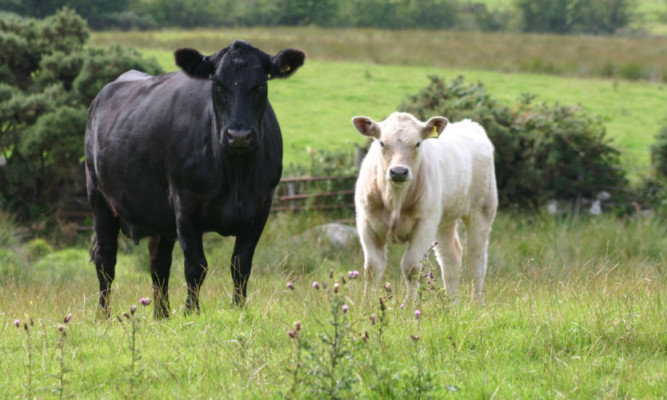The number of cattle slaughtered in Scotland and GB late last year was well ahead of 2013 levels, despite British Cattle Movement Service calving data suggesting numbers should have been tightening.
According to Stuart Ashworth, head of Economics Services with Quality Meat Scotland (QMS), the reason for this improvement in supply is that cattle finished more quickly, particularly as autumn progressed into winter, and as a result came on to the market earlier.
“The latest information shows that the average age of UK prime cattle at slaughter during December was eight days younger than the previous year, and that cattle had been slaughtered at a younger age throughout the final quarter of 2014,” Mr Ashworth said.
Meanwhile, average carcase weights continue to be higher than last year, with finishing cattle growing well over the past quarter, pushing up the quantity of beef on the market.
“Although price-reporting abattoirs are continuing to show higher weekly kills than 12 months earlier, the number of prime cattle reaching Scottish and English auctions during January has fallen below last year’s levels.
“Meanwhile producer prices continue to edge higher which, given the greater tonnage of beef being produced, promises some underlying strength in the market, although Scottish producer prices remain almost 5% lower than 12 months ago.”
It is not just Scottish and UK prices that are edging upwards. The announcement of the opening of trade between Ireland and the US appears to have had a positive impact on Irish prices despite Irish slaughter numbers still running ahead of year-earlier levels.
Irish prices are almost 2% higher than 12 months ago.
According to Bord Bia this improved supply situation will not be a long-term feature this year as they anticipate a 100,000 reduction in the Irish kill in 2015.
If carcase weights remain unchanged, this would cut Irish beef production this year by around 5-6%.
Elsewhere in Europe, prices in general edged up over the past couple of weeks but remain about 1% lower than last year.
The biggest upward movement in prices over the past year has, however, occurred in the United States, said Mr Ashworth.
“Their well-publicised decline in cattle herd saw their cattle numbers at the end of 2014 at an estimated 88 million head compared with 95 million head a decade ago.
“US love of beef has seen their producer price increase almost 30% in the past year to stand at historic high levels that have even exceeded Scottish producer prices in recent weeks.
“Needless to say this is stimulating thoughts of herd rebuilding, although poor grass conditions remain a constraint which is likely to leave the US short of beef for another 12 months,” said Mr Ashworth.
In Brazil, cattle prices climbed 25% last year, which is leading to an increase in retentions for breeding. This is expected to constrain beef production in Brazil this year.
“In Australia prime cattle prices have surged in early January as improved grass growth conditions have reduced the number of prime cattle reaching the market as some herd rebuilding has started,” he said.
“Nevertheless, for most of the second half of 2014 Australian slaughter numbers were higher than year-earlier levels but this did not affect local prices, which were typically 10% higher than a year earlier.”
